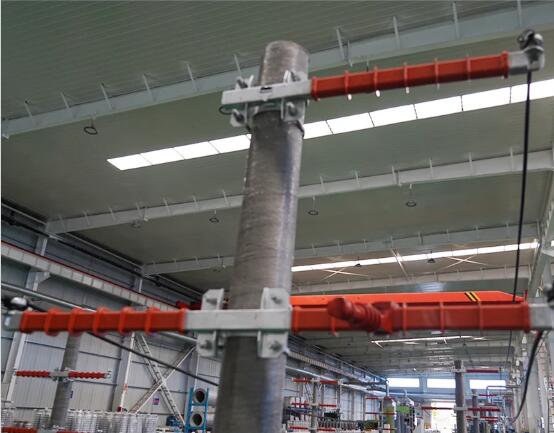Strengthening Grid Resilience: The Role of Polyurethane Composite Utility Poles in Natural Disaster-Prone Areas
2024-02-26
In the face of increasingly frequent and severe natural disasters, ensuring the resilience and reliability of electrical grids has become a top priority for utility companies worldwide. From hurricanes and earthquakes to wildfires and floods, extreme weather events can wreak havoc on utility infrastructure, disrupting power supply and causing widespread damage. In this context, polyurethane composite utility poles emerge as a key solution for enhancing grid resilience and reliability in disaster-prone areas. Let's explore how these innovative poles contribute to grid resilience in the face of nature's fury.
1. Superior Durability:
Polyurethane composite utility poles are engineered to withstand the most demanding environmental conditions, including high winds, heavy rain, and extreme temperatures. Unlike traditional materials like wood or steel, which may succumb to rot, corrosion, or physical damage during natural disasters, polyurethane composite poles maintain their structural integrity and functionality. Their robust construction ensures that power lines remain intact and operational even in the aftermath of severe weather events.
2. Resistance to Environmental Hazards:
In areas prone to wildfires, coastal storms, or seismic activity, utility infrastructure is exposed to a wide range of environmental hazards. Polyurethane composite utility poles offer inherent resistance to fire, moisture, corrosion, and insect damage, mitigating the risk of infrastructure failure during natural disasters. Their ability to withstand these hazards ensures continuous power supply and facilitates faster recovery efforts in disaster-affected areas.
3. Lightweight Design:
During emergency response and recovery operations, rapid deployment of utility crews and equipment is critical for restoring power and essential services. Polyurethane composite utility poles, with their lightweight design, enable swift transportation, handling, and installation, even in challenging terrain or remote locations. This agility and flexibility enhance the efficiency of disaster response efforts and accelerate the restoration of electricity to affected communities.
4. Flexibility and Resilience:
In the event of infrastructure damage or outages caused by natural disasters, polyurethane composite utility poles offer greater flexibility and resilience compared to traditional materials. Their composite construction allows them to bend and flex under extreme loads, reducing the risk of catastrophic failure and minimizing downtime. This resilience enables utility companies to maintain grid reliability and restore power more efficiently in the aftermath of disasters.
5. Long-Term Cost Savings:
While the upfront cost of polyurethane composite utility poles may be higher than traditional options, their superior durability and resilience translate to significant long-term cost savings. By reducing the frequency of replacements, maintenance requirements, and downtime associated with natural disasters, polyurethane composite poles offer a compelling return on investment for utility companies operating in disaster-prone areas.
6. Enhanced Safety and Community Resilience:
Grid resilience is not just about maintaining power supply; it's also about safeguarding public safety and community well-being during emergencies. Polyurethane composite utility poles contribute to enhanced safety by minimizing the risk of pole failures, electrical hazards, and service disruptions during natural disasters. Their reliability and durability provide peace of mind to residents, businesses, and emergency responders, fostering greater community resilience in the face of adversity.
In conclusion, polyurethane composite utility poles play a crucial role in strengthening grid resilience and reliability in areas prone to natural disasters or extreme weather events. Through their superior durability, resistance to environmental hazards, lightweight design, flexibility, and long-term cost savings, these innovative poles enable utility companies to maintain continuous power supply, accelerate recovery efforts, and safeguard public safety in the aftermath of disasters. As climate change intensifies the frequency and severity of natural disasters, polyurethane composite utility poles stand as a resilient and forward-thinking solution for building a more resilient grid infrastructure.



